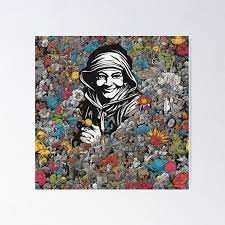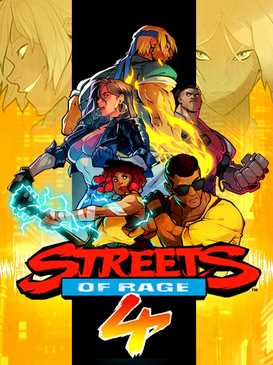Street art has become an integral part of the urban landscape, engaging with the public and transforming ordinary spaces into vibrant artistic expressions. This form of art allows artists to break free from traditional gallery spaces and share their creativity with a wider audience.
One of the most captivating aspects of street art is its ability to convey powerful messages and evoke emotions. Artists use walls, buildings, and other structures as their canvases, using various techniques and materials to create visually stimulating and thought-provoking pieces. Street art often challenges societal norms, addresses political issues, and highlights social injustices. Through their work, artists aim to spark conversations and encourage viewers to think critically about their surroundings.
The ephemeral nature of street art adds to its allure and uniqueness. Unlike traditional art forms, street art is temporary and subject to weathering, vandalism, or removal. This transitory nature makes each piece unique, as it exists in a specific time and place, making it a snapshot of the artists’ creativity and the sociopolitical climate of the moment.

Street art can be traced back to ancient civilizations where markings and symbols were carved or painted on walls and streets. However, the modern form of street art that we see today originated in the 1960s and 1970s, primarily in the United States. It was during this time that graffiti began to emerge as an expression of urban culture and rebellion.
In the early days, street artists would use spray paint and markers to create their artworks on subway trains and city walls. These artists were often influenced by hip-hop culture and used their art as a way to express their identity and voice their social and political opinions.
Over time, street art evolved and began to include a wide range of techniques and mediums. Artists started to experiment with stencils, wheatpasting, and stickers, allowing them to create larger and more intricate artworks. This evolution also led to a shift in the perception of street art, with many people recognizing it as a legitimate form of artistic expression.
The Rise of Street Art
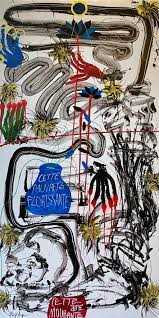
In the 1980s and 1990s, street art gained popularity and started to be recognized by the mainstream art world. Artists like Keith Haring and Jean-Michel Basquiat played a significant role in bridging the gap between street art and the art establishment. Their bold and vibrant works could be seen not only on the streets but also in galleries and museums.
This newfound recognition led to the emergence of street art festivals and events, where artists from around the world could come together to showcase their talents. These events provided a platform for artists to collaborate, share ideas, and push the boundaries of their art.
The Impact of Street Art
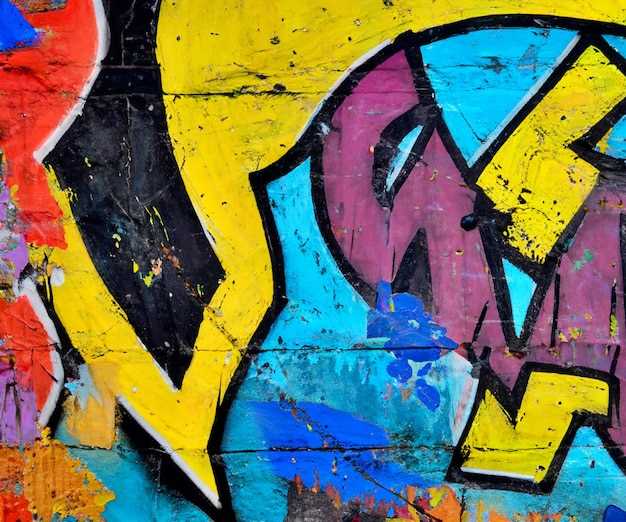
Street art has had a profound impact on urban landscapes and popular culture. It has the power to transform a dull and mundane space into an engaging and visually stimulating environment. Additionally, street art often addresses social, political, and environmental issues, acting as a voice for marginalized communities and challenging the status quo.
Furthermore, street art has become a source of inspiration for other art forms, such as graphic design and illustration. Many street artists have transitioned into successful careers in the art world, further blurring the line between street art and traditional forms of art.
The Power of Spray Paint in Urban Art
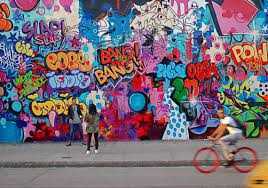
Spray paint is an essential tool in the world of urban art, offering artists a means to express their creativity in vibrant colors and bold strokes. With the simple act of pressing down on a can’s nozzle, artists can transform a blank wall or surface into a vibrant and captivating work of art.
One of the major advantages of spray paint in urban art is its versatility. Artists can easily control the thickness and intensity of the paint by adjusting the distance between the can and the surface. They can create fine lines and intricate details, or they can cover large areas with broad strokes, allowing for a wide range of artistic expression.
Furthermore, spray paint enables artists to work quickly and efficiently, as it dries almost instantly. This allows street artists to quickly complete their works, often under the cover of darkness or in high-traffic areas where time is limited. The fast-drying nature of spray paint also means that artists can easily layer colors, creating depth and texture in their art.
Another advantage of spray paint is its durability. Unlike other forms of paint, spray paint is designed to withstand outdoor conditions, such as sunlight and rain. This makes it perfect for urban art, which is often exposed to the elements. The longevity of spray paint allows street art to remain vibrant and intact for longer periods, adding to the visual landscape of the city.
Not only does spray paint offer practical advantages, but it also holds a certain symbolism in the world of urban art. As a medium traditionally associated with graffiti and street art, spray paint represents rebellion, freedom of expression, and the ability to transform public spaces. The act of using spray paint to create art on city walls challenges societal norms and explores the boundaries of creativity.
The Role of Graffiti in Street Art
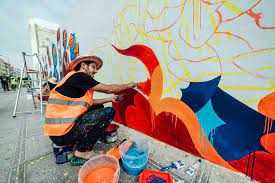
Graffiti is a prominent form of expression within the realm of street art. It serves a crucial role in shaping the overall aesthetic and cultural significance of this art form. By utilizing various techniques and styles, graffiti artists are able to communicate their ideas, emotions, and experiences to the public.
1. Challenging Conventional Artistic Boundaries
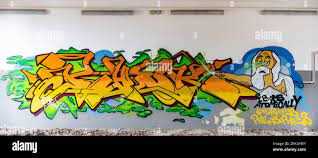
Graffiti pushes the boundaries of traditional art by reclaiming public spaces and transforming them into canvases for self-expression. In doing so, it challenges the notion that art should only be displayed within the confines of galleries or museums. By taking their work to the streets, graffiti artists make their creations accessible to a wider audience, fostering a sense of inclusivity and democratizing the art world.
Through their bold and often controversial visual statements, graffiti artists provoke thought, sparking conversations about social and political issues. These artists use their paintings and murals to shed light on marginalized communities, raise awareness about injustices, and advocate for change.
2. Fostering a Sense of Community
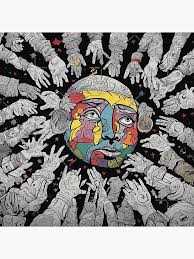
Graffiti contributes to the creation of vibrant and dynamic communities by transforming public spaces into interactive and engaging environments. It allows local artists to leave their mark on the urban landscape, encouraging a sense of ownership and belonging.
Public graffiti walls or legal graffiti zones serve as platforms for emerging artists to showcase their talent and gain recognition. This not only cultivates a supportive environment for artistic growth but also fosters a sense of camaraderie among the artists themselves. Collaborative projects and mural festivals further promote community engagement and encourage dialogue between different artistic styles and perspectives.
Street Art in the NFS Universe
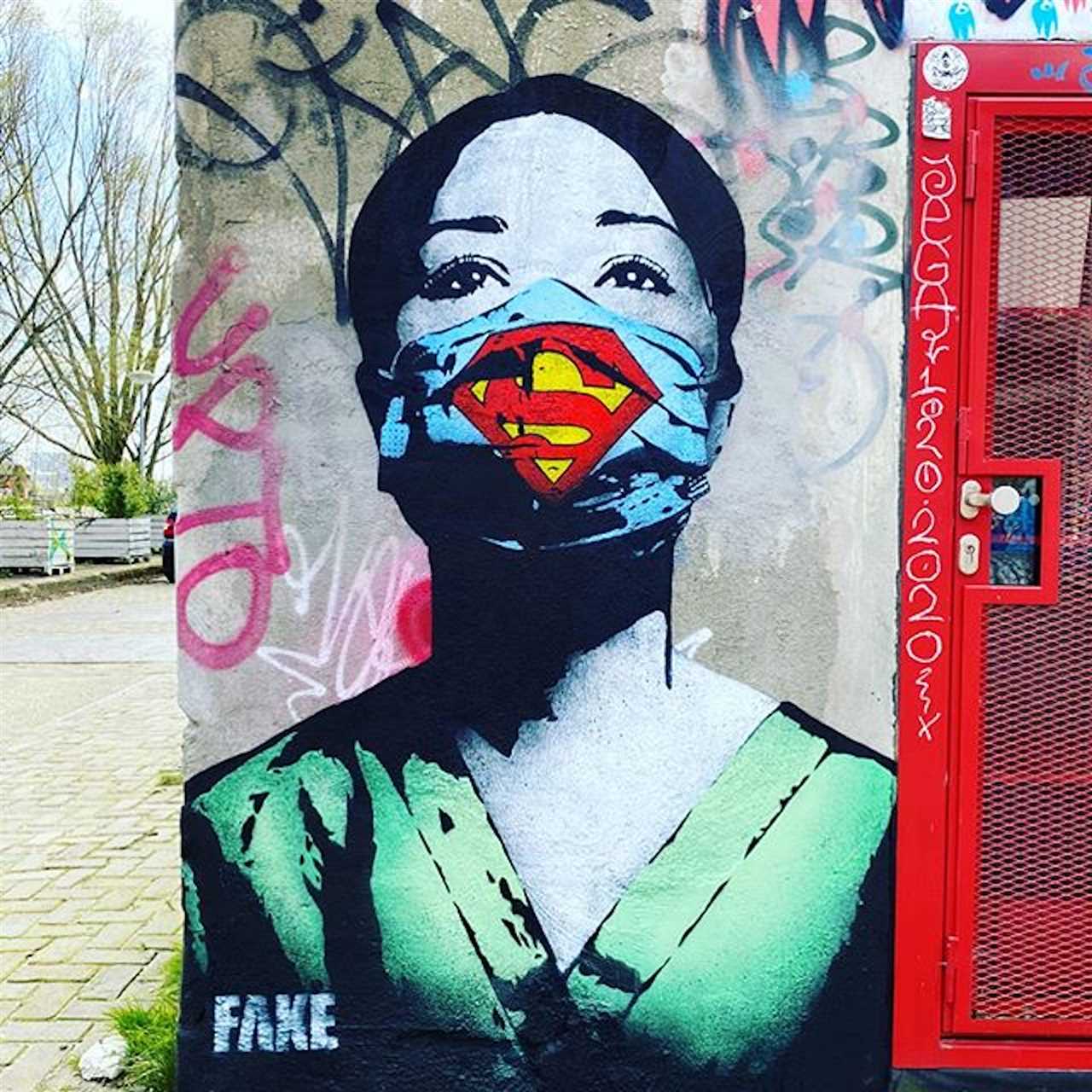
Street art has been an integral part of the urban landscape for decades, adorning the walls of cities around the world with colorful and thought-provoking works. In the realm of video games, one franchise that has embraced the expression of creativity through street art is none other than the NFS Universe.
NFS, short for Need for Speed, is a long-standing series of racing games that has captivated players with its fast-paced gameplay and extensive customization options. Alongside the main gameplay mechanics, NFS has also incorporated street art as a means of self-expression and personalization within the game world.
Within the NFS Universe, players have the ability to create their own unique street art designs and apply them to their cars, creating a truly personalized and eye-catching aesthetic. From graffiti-inspired murals to intricate abstract designs, the options are virtually limitless. This feature allows players to not only showcase their artistic abilities but also gives them a sense of ownership and pride in their virtual racing machines.
In addition to the player-created street art, the NFS Universe also features pre-made designs from renowned street artists. Collaborations with artists such as Kaws, Shepard Fairey, and Stash have resulted in stunning pieces of street art that can be applied to the in-game cars. This adds a sense of authenticity and credibility to the street art within the game, further enhancing the immersive experience for players.
The inclusion of street art in the NFS Universe not only adds visual flair to the game but also serves as a form of cultural representation. Street art has long been associated with rebellion, self-expression, and the urban landscape, and by incorporating it into the game, NFS pays homage to the importance and impact of street art in real-world communities.
Overall, street art in the NFS Universe serves as a powerful tool for self-expression and creativity, allowing players to showcase their artistic abilities and personalize their virtual racing experience. Whether it’s through player-created designs or collaborations with renowned street artists, the presence of street art adds depth and authenticity to the game world, making the NFS Universe a truly immersive and visually captivating experience.
| Benefits of Street Art in NFS Universe | Examples of Street Art in NFS |
|---|---|
| – Allows players to showcase their artistic abilities | – Graffiti-inspired murals |
| – Adds a sense of ownership and pride in virtual cars | – Intricate abstract designs |
| – Collaborations with renowned street artists | – Designs from artists like Kaws, Shepard Fairey, and Stash |
| – Cultural representation and homage to street art | – Pays respect to the impact of street art in real-world communities |

I am a mural enthusiast and a fervent admirer of street art. Rather than creating murals myself, I am passionate about collecting them. My love for street art knows no bounds. I am dedicated to curating and cherishing these artworks that grace the streets. My collection stands as a testament to my profound appreciation for this form of artistic expression.
read about me

